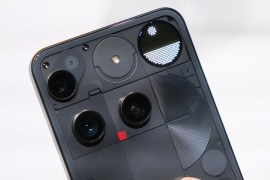Fujifilm X-A2 review
Fuji’s retro-inspired X-series gets a capable new entry-level model
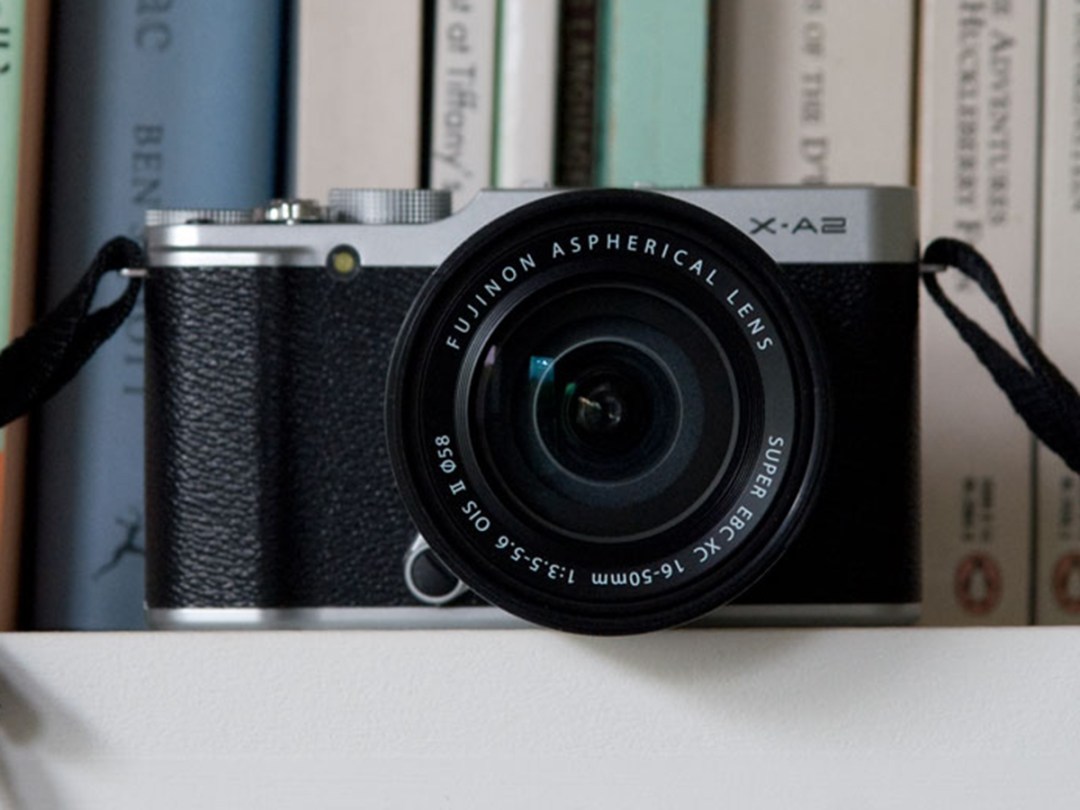
Compact system cameras aren’t just for the advanced user with an abundance of cash to burn – at least that’s what Fujifilm is trying to show with the latest entry-level model in its retro-styled X- mount range.
The X-A2 costs just £350 including a zoom lens, and strips away much of the stuff that photography newbies might find a little daunting. But can it perform as well as a decent CSC should, offering a big bump up in power from point-and-shoot or smartphone photography?
Evolution or revolution?
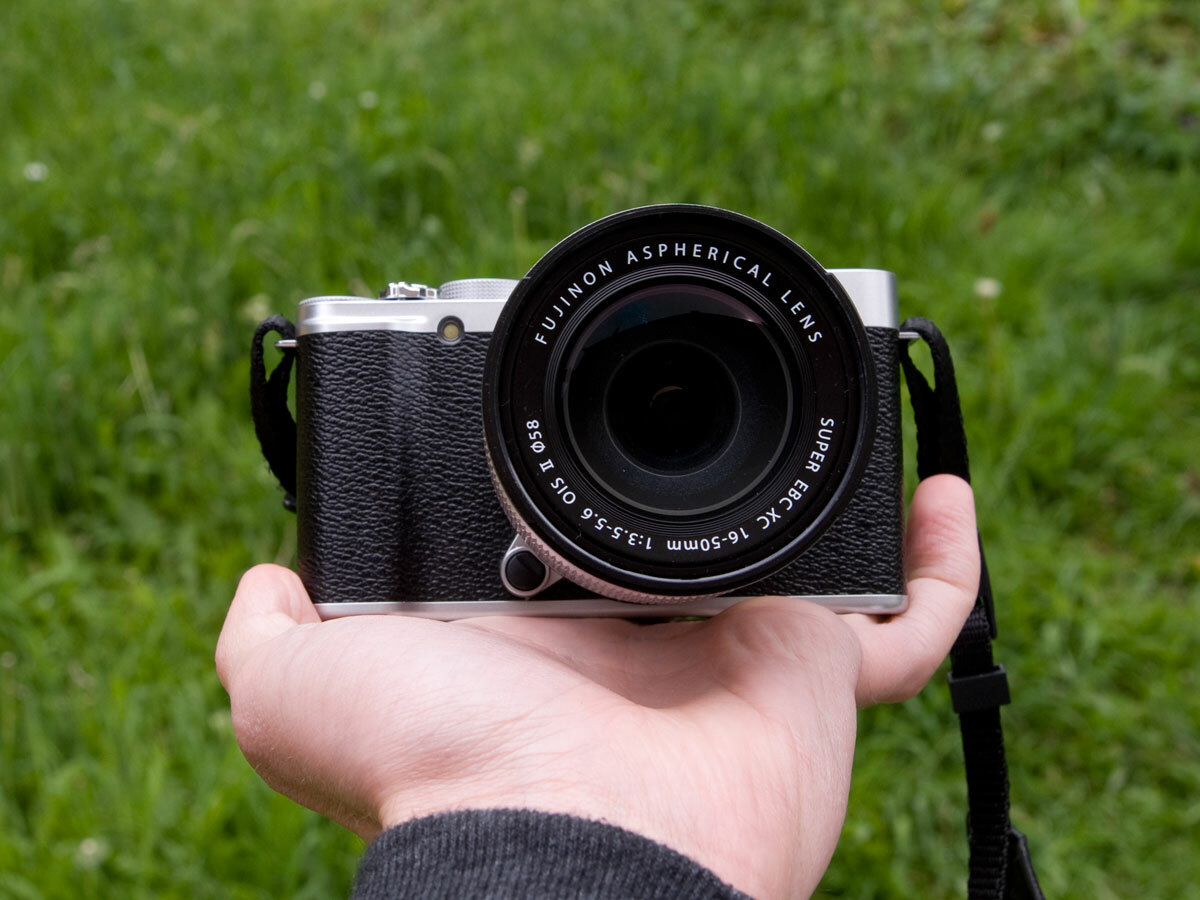
First off, let’s look at the things that differentiate the X-A2 from its predecessor (and the model it’s replacing in Fujifilm’s line-up) the X-A1.
After all, the X-A1 offers similarly handsome old-school looks, the same 16MP CMOS sensor and a host of bells and whistles that have been carried over into its successor – stuff like Wi-Fi and a 3in, 920,000-dot LCD screen. Why shouldn’t you just opt for the older, cheaper model?
Well, while the X-A2 feels like an evolution of the X-A1 rather than a radical overhaul, there’s a handful of new additions to the camera that go a long way towards justifying the extra outlay, particularly for first-time compact system camera buyers.
RELATED › Fujifilm X-T1 review
Selfie support
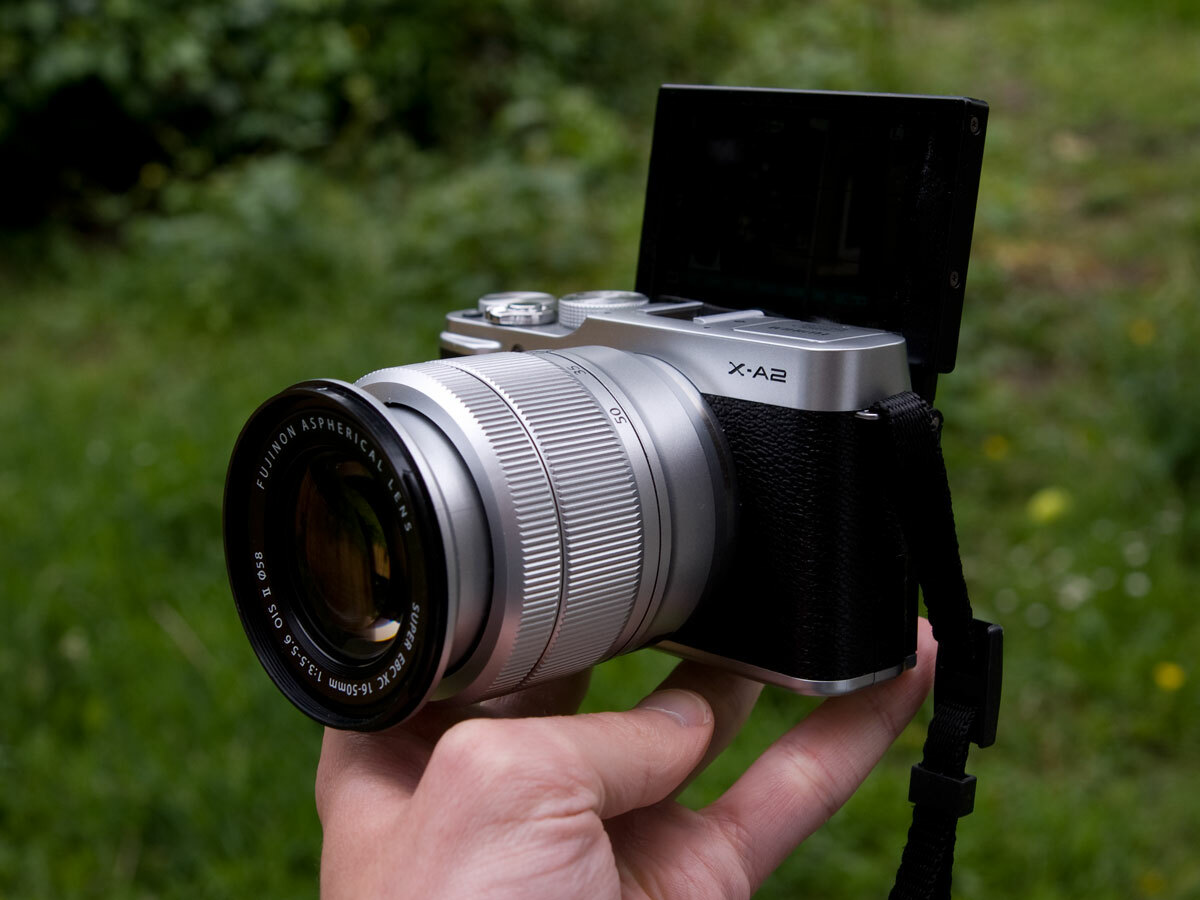
First and foremost, the autofocus system has been made a little cleverer. As well as faces, it now has the ability to recognise eyes and automatically focus on them, which aids portraits – especially selfies.
Love them or hate them, selfies are here to stay, and Fujifilm has made another tweak to aid those photographers who can’t go more than an hour without shooting their own face: a screen that flips 175 degrees to face forward (the X-A1’s screen tilted, but stopped way short of a full forward flip).
Battery life has been boosted to a claimed 410 shots-per-charge (I found it dying well before that, but then I was taking video, fiddling with settings and using a lot of energy-sapping autofocus), and the new 16-50mm kit lens is a definite improvement over the X-A1’s, offering a minimum focus distance of just 15cm, which allows for some impressive macro close-ups.
Metal baby
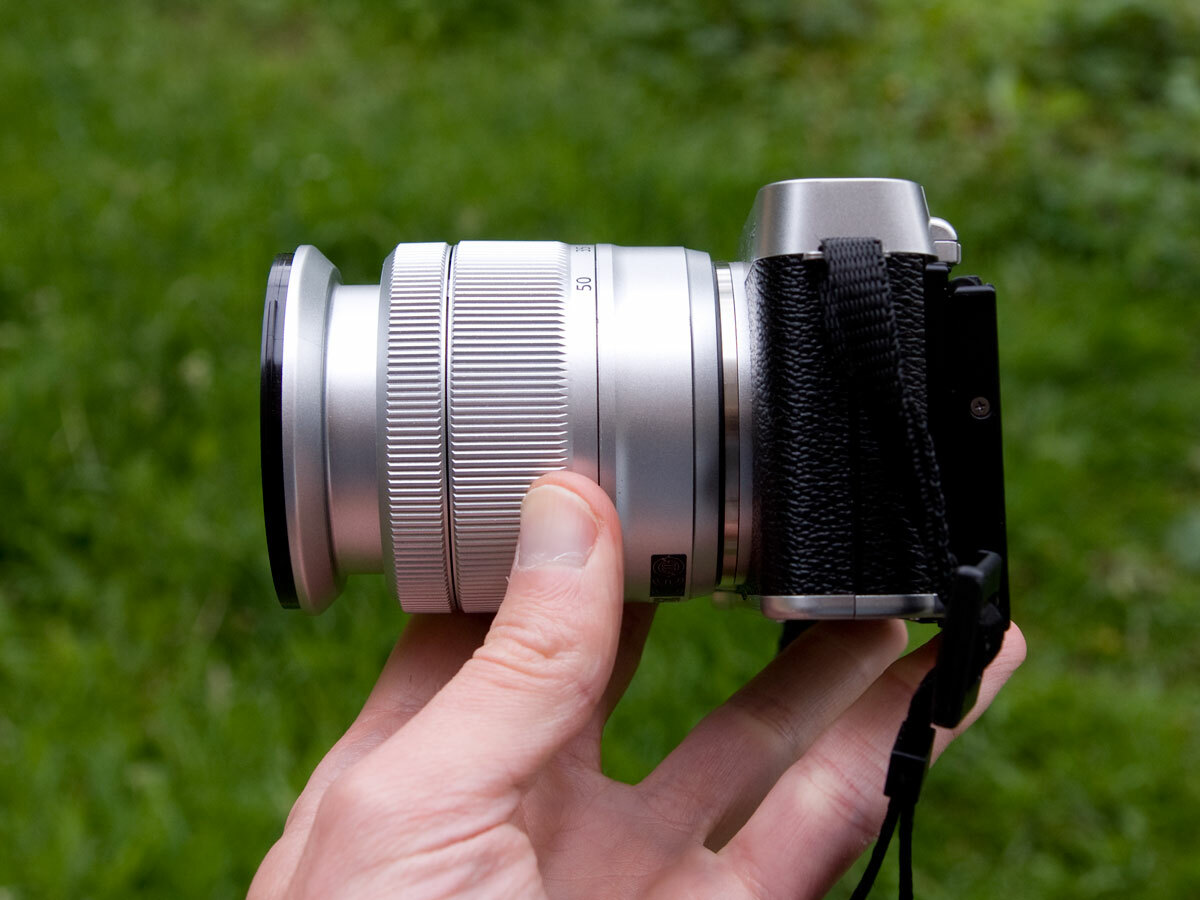
That feels like a decent selection of new talents, even to a selfie-hater like me. And besides that, the X-A2 feels distinctly well put-together for an entry-level camera. While some rivals are plasticky and lightweight, it’s mostly metal on the outside and there’s no sign of creakiness anywhere in its build. It’s light enough to be used one-handed, too.
I do, however, miss having an electronic viewfinder here. For all the screen’s extra tilting capabilities, on a sunny day it’s tough to make out anything clearly enough to ensure that you’ve got the shot you need. A viewfinder would eliminate that problem at a stroke.
There aren’t many signs here that this is an affordable camera, but the lack of an EVF is one.
Filter stations

Image quality is a strong point here. Few compact system cameras these days serve up anything less than excellent pictures when used within their limits, and the X-A2 is no exception. I spent a few weeks with it, using both the aforementioned kit lens and Fujifilm’s 35mm f/1.4 prime lens (which costs around £380 – so quite an extra investment), and captured plenty of photos I was truly happy with.
Colour, detail and contrast are all solidly punchy for a model in this price bracket, and the 1080p HD video is pleasingly smooth and faithful.
Fujifilm has included its various film simulation modes – essentially pre-made filters that ape the effects of the company’s analogue film types of years gone by – and these can be applied to both stills and videos. While they don’t do anything that can’t be done by any decent image editing program, they’re mostly well-made and it’s a lot easier to add them before you take a snap than to have to export it them, add them, then re-save.
I’m particularly partial to the evocative Kodachrome look of the “Classic Chrome” mode. But maybe that’s just me.
Dial it back
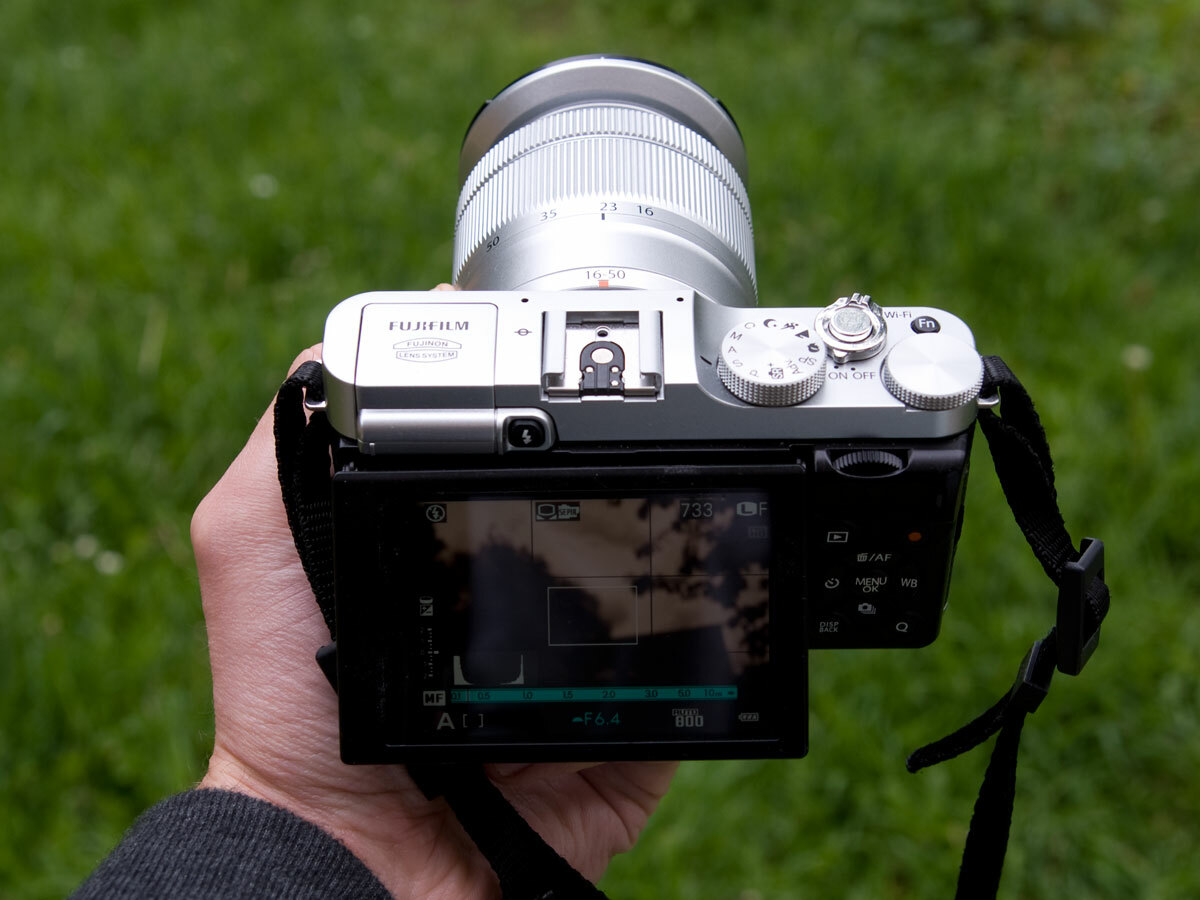
I do have a few issues with the X-A2 besides the (understandable, given the price range) lack of a viewfinder and the reflective screen. On the control front, there are two dials for adjusting settings, something that in itself is not a problem – in fact, it’s a good thing as not all similarly-priced cameras have more than one adjustment dial, and here they can be customised to change your preferred settings.
The problem I have is the placement of the top dial, which sits at the edge of the camera and consequently gets moved a lot when you’re holding the camera or putting it into a bag. I had this set to change exposure compensation, and as a consequence of its moving I took a lot of photos that were either over- or underexposed. Partly my fault for not being more thorough when taking the photos, but in the age of point-and-shoot photography nobody wants to spend 30 seconds making sure they haven’t mistakenly twisted a dial every time they take a photo.
There’s also no in-body optical image stabilisation, with Fujifilm relying on its lenses to provide anti-shake technology. That’s not an issue if you’re shooting outdoors in good lighting, but I found indoor and low-light performance a little lacking here: even with the f/1.4 lens attached, I ended up with some blurry shots. Again, it’s an entry-level camera, so perhaps I’m expecting too much.
YOU MIGHT ALSO LIKE › Sony A7 II review
Fujifilm X-A2 verdict

The X-A2 is another impressive X-series camera from Fujifilm, and packs in a lot for the price. At £350 including a decent lens, it makes a great entry-point for point-and-shoot and smartphone snappers wanting to take the next step. Plus, when paired with superior lenses – and Fuji has plenty of them in its range – it can deliver even better results. Topping the whole thing off is the solid build and eye-catching retro design that has become synonymous with the X-mount range.
It’s not perfect, and shoppers with a bigger budget should look for a model with a viewfinder, but by entry-level standards this is among the best of 2015’s offerings so far.
Stuff Says…
A solidly built entry-level system camera offering a lot for the price
Good Stuff
Affordable price
Decent quality kit lens
Strong build quality and performance
Bad Stuff
No viewfinder
Screen hard to use in sunlight
Adjustment dial gets jogged frequently

